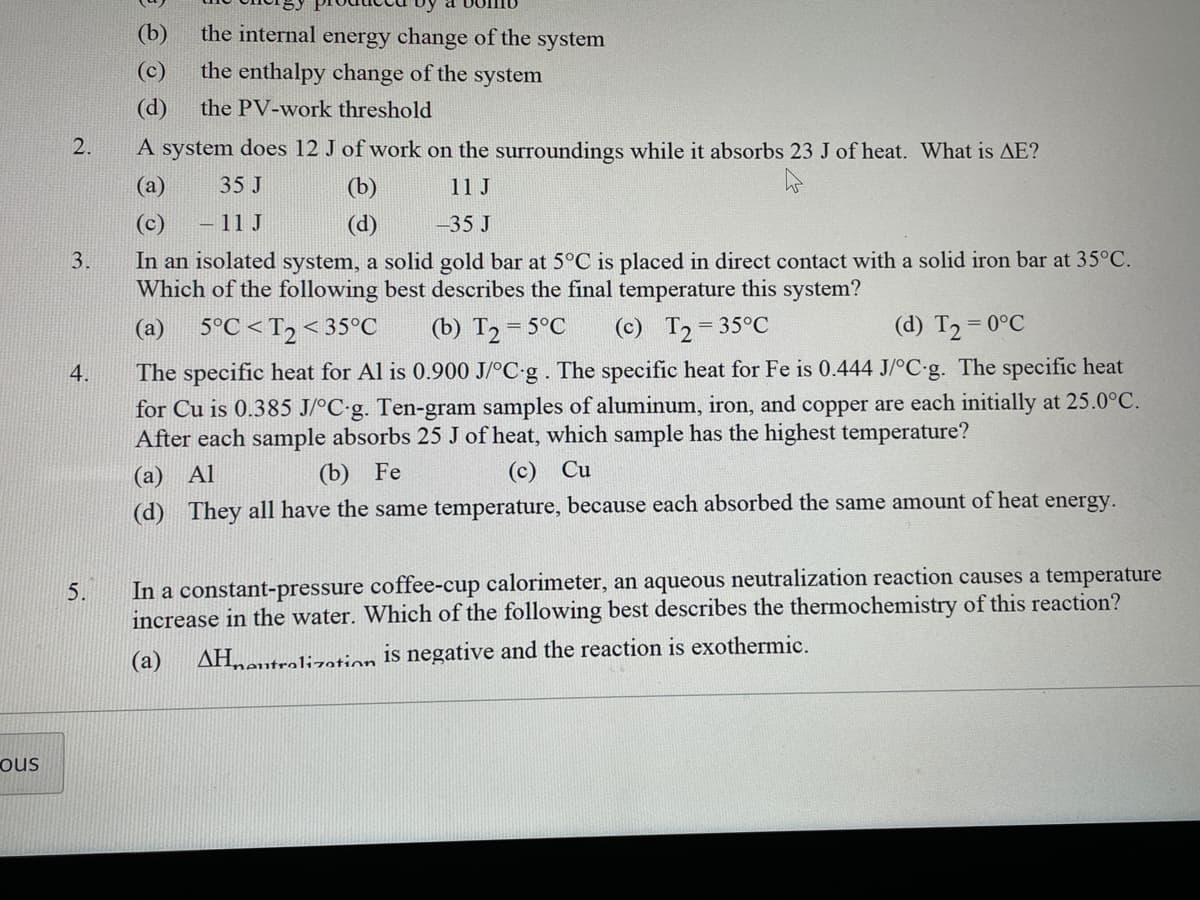In an isolated system, a solid gold bar at 5°C is placed in direct contact with a solid iron bar at 35°C. Which of the following best describes the final temperature this system? 3. (а) 5°C < T2 < 35°C (b) T2 = 5°C (с) Т, - 35°С (d) T2 = 0°C The specific heat for Al is 0.900 J/°C• . The specific heat for Fe is 0.444 J/°C-g. The specific heat for Cu is 0.385 J/°C g. Ten-gram samples of aluminum, iron, and copper are each initially at 25.0°C. After each sample absorbs 25 J of heat, which sample has the highest temperature? 4. (a) Al (b) Fe (с) Cu (d) They all have the same temperature, because each absorbed the same amount of heat energy.
States of Matter
The substance that constitutes everything in the universe is known as matter. Matter comprises atoms which in turn are composed of electrons, protons, and neutrons. Different atoms combine together to give rise to molecules that act as a foundation for all kinds of substances. There are five states of matter based on their energies of attraction, namely solid, liquid, gases, plasma, and BEC (Bose-Einstein condensates).
Chemical Reactions and Equations
When a chemical species is transformed into another chemical species it is said to have undergone a chemical reaction. It consists of breaking existing bonds and forming new bonds by changing the position of electrons. These reactions are best explained using a chemical equation.

Trending now
This is a popular solution!
Step by step
Solved in 2 steps









